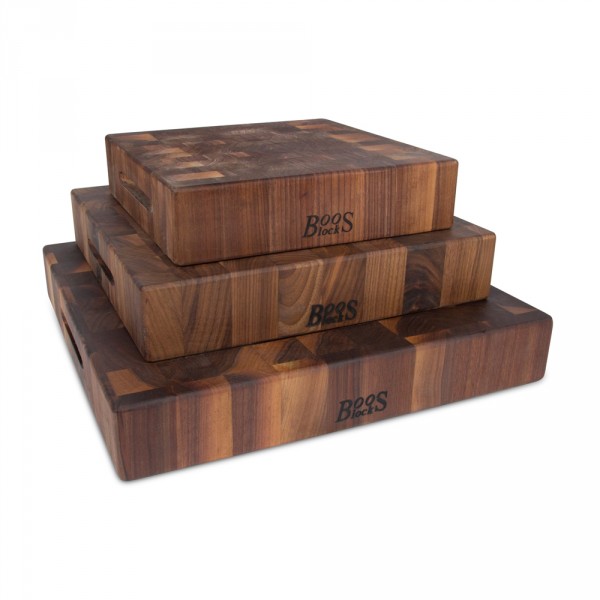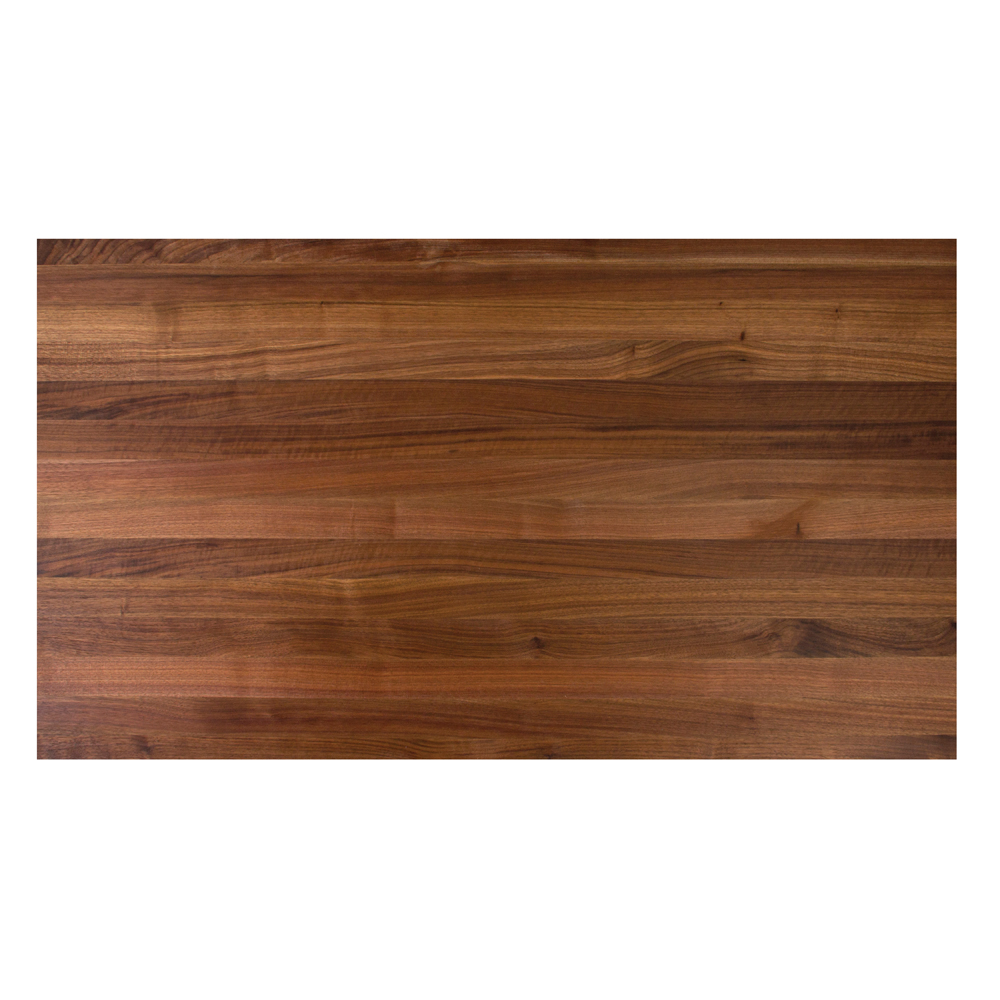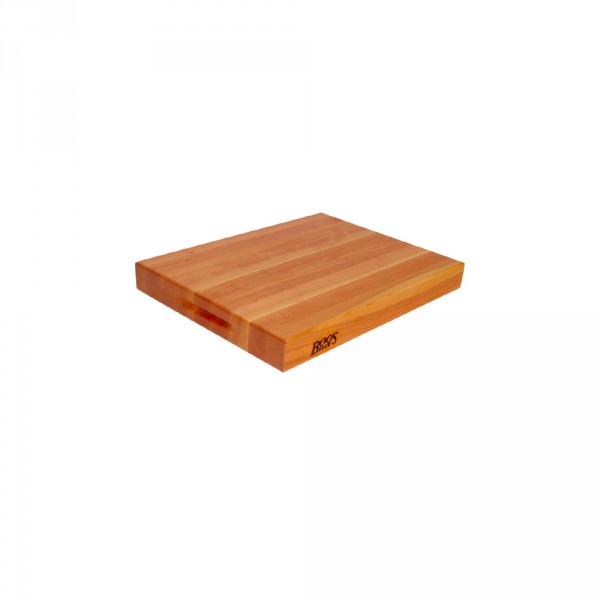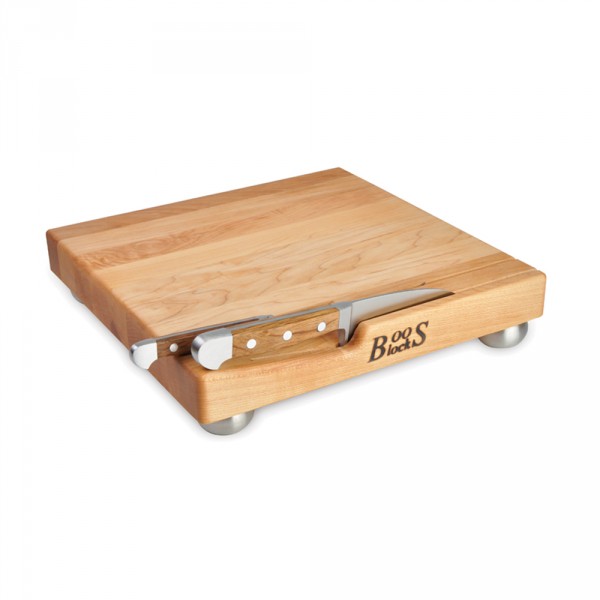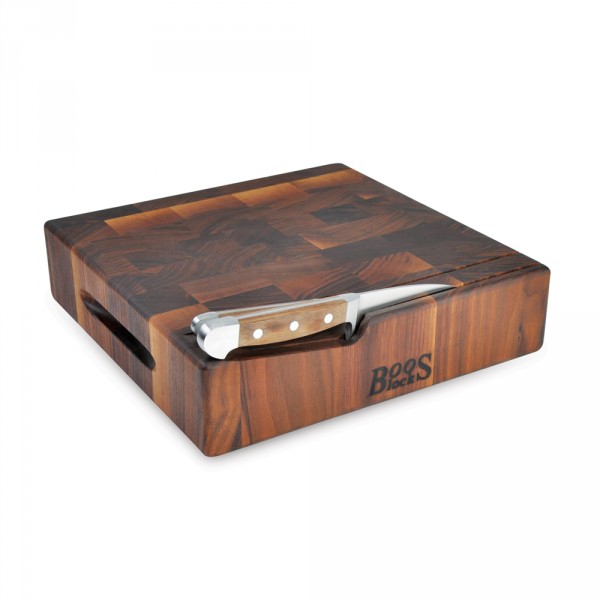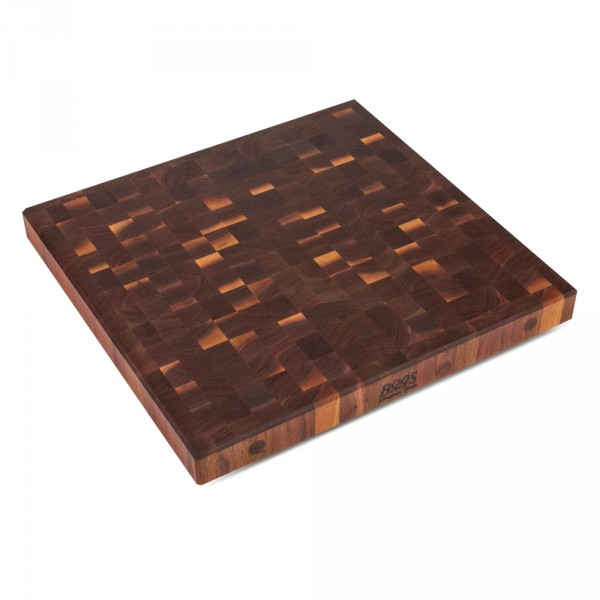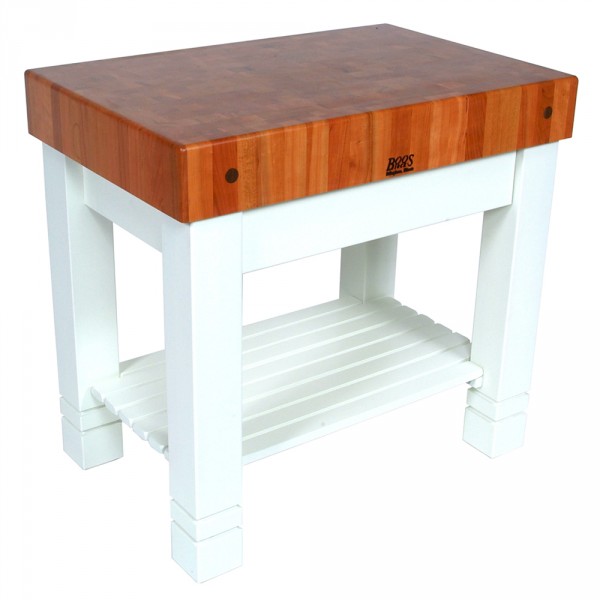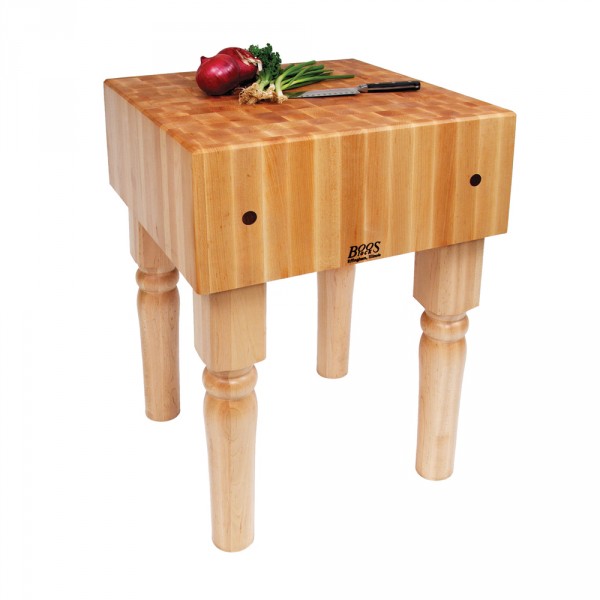While we’re all about travel over here at We Blog the World, we also write about lifestyle and culture and as many food lovers know, food and wine is one of our biggest categories. We hang out with chefs, attend cooking classes and go to food preparation events wherever we can and in whatever city we happen to be in. While most of the products we look at tend to be more usable (and useful) while on the road, we are expanding our Style Section and have even started reviewing clothes, shoes and beauty, which you’ll see in spades with the upcoming relaunch of our site.
In preparation for that expansion, we’ve been looking at more lifestyle products, particularly ones related to our hottest categories, like events, festivals, food/wine, style, luxury living and travel and adventure. In our research, we came across Boos Cutting Boards and were wowed over by their high quality selection, deep rich textured woods and commitment to sustainable practices. It should be no surprise that they’ve been around for over 125 years, so have a boat load of history to fall back on and that’s where the top notch quality comes in.
Based in Illinois, they’re one of the oldest manufacturers of premium quality food service equipment and butcher blocks in the US so butcher blocks and cutting boards are not all they do — they make steel dish tables, work tables, sinks and shelving as well as custom fabrication and furnishing as well as kitchen counter tops. It was their butcher blocks and cutting boards that we began to take a closer look at , especially since they use all American Hardwoods (Hard Rock Maple, American Cherry, & American Black Walnut) in their production of gourmet furnishings. Have a look at the deep rich textures that first caught our eye and you’ll see why we were more than a little intrigued. Let’s just say that not all cutting boards are the same and the more you do some digging, the more you’ll realize the difference. Frankly, it’s worth spending more to get a high quality board that will last for years.
It all Starts with the Lumber…
After the lumber is graded, it’s goes through a rigorous drying process in the kilns for a specific period of drying time, depending on the weather and atmospheric conditions. There’s more than meets the eye when you make a quality board — most of the boards you get at your average hardware store or department store use lower grade wood and they’re not very thick, which increases the likelihood of them warping when exposured to water and moisture.
At Boos, the process is much more detailed. The wood is surfaced flat with a machine then ripped into rails, and then the rails are cut to the correct lengths and glue is applied to create panels. Whatever material is left, (random length pieces of wood) they use and finger-joint them back into the longer rails and make them into counter tops. The cutting board panels are then sanded on both sides to give a nice, smooth finish for an ultimate reversible cutting surface experience with an elegant finish.
After sanding, the cutting board goes to a routing machine where it is shaved. The machine shapes the wood into various types of cutting boards of different sizes, some with juice grooves, wells, or pyramid designs, some without. You can get a matching counter top slab cut to your designated width and length that actually matches a cutting board.
Wooden Countertops
We thought a counter top would be a great thing to test out, especially for a small kitchen. If you’re an avid traveler, you may very well have a massive country home with a big kitchen island or like many urban dwellers close to international airports, you may be stuck with a small kitchen like we are, so adding some class to it through a custom counter top wood slab is a great option. And, for the nature lovers out there, you can get the benefit of rich wood eye candy right in the heart of your kitchen, rather than the more modern marble top finishes.
You can choose from a 2-1/4″ or 3″ thickness, up to 97″ Length Walnut KCT Standard With Full Length Rails and over 97″ Length Walnut KCT Standard with KCT Style Finger Joints. Standard is a penetrating oil finish but you can also get an optional Varnique finish if you wish. What can I say? Absolutely STUNNING!
Cutting Boards
While Boos’ quality is higher than the average cutting board, they still can have the potential to crack. In order to prevent them from cracking, they recommend that you oil them every 3-4 weeks so the wood doesn’t dry out. We fell in love with their darker woods, so went with the same dark Walnut cutting board to accompany a custom wooden counter top. To be honest, when they first arrived, we stared at them for awhile and then shrugged our shoulders – “I don’t think I could cut on this board it’s so beautiful,” Anthony said to me and I had to agree. As long as you keep it oiled, you should have no problem with regular use, however we alternate using it as a board and as a beautiful kitchen piece on the counter top.
It comes in a lighter wood as well if you want go to with a Cherry or oak look. There are a few dimensions you can choose from as well, so it’s worth taking note of your kitchen style, the other fixtures and how you plan to use the board before you decide which size to order. While you can purchase the board in a few different sizes (width and length), they are 1-1/2 inches thick, a size which improves the likelihood of warping over time. We loved this Walnut Edge Grain construction — there’s even hand grips on both sides (see above left) and while it arrives already oiled, we oiled the pieces immediately before beginning regular use, which we’d recommend and so do they.
Below is both a lighter wood colored and a dark walnut board with slots for knives – while clearly usable, they make attractive boards you can serve things on while entertaining. Notice the difference in height between the two boards — what’s great about Boos is the ability to customize size and color depending on your preference or need.
The other board we fell head over heels in love with the below Fusion Board (below) which comes in Cherry, Walnut and Maple. Again, while also usable as a cutting board, it is so elegantly designed that you can use it to present cheese and fruit on as well. We went for American Black Walnut (rich and deep) and it comes with wooden feet attached to the bottom, keeping it higher off the counter where moisture can gather. It comes with a beeswax finish and is available only in one size, but a very convenient and popular one that will work in most kitchens — 20″ x 15 x 1″.
End Grain Island Tops
Below also in the American Black Walnut End Grain is an end grain island top, which is another great way to beautify your kitchen. This comes in a variety of thickness (2-1/4″, 3″, 4″, or 7″) and widths (25″, 27″, 32″, or 38″).
Cleanliness & Why This Matters
Many of you may have grown up with plastic cutting boards and we had a few in our kitchen over the years as well. With the growth of exposure about the ills of plastic, going with wood should seem like an easy choice although not everyone is yet aware of the potential harmful effects of plastic use. Additionally, wood cutting boards inhibit bacteria growth while plastic cutting boards can harbor more bacteria.
Dr. Ulrike Kleiner, from the Laboratory of Hygiene Research at the Anhalt University in Bernburg, Germany, performed a new study on hygienic qualities of wood and plastic cutting boards. Dr. Kleiner’s results reinforced Dr. Dean Cliver’s study: that hard rock maple wood cutting boards are more sanitary than plastic cutting boards. Furthermore, wood cutting boards are known to be easier on your knives and they are sustainable and biodegradable, where plastic cutting boards are not. For the data junkies among you, can you can read the German study by Dr. Ulrike Kleiner and the Dr. Dean Cliver’s study.
Food safety is a universal concern whether it involves the commercial foodservice industry or the confines of our own home. As many as 1 in 6 Americans get sick by consuming contaminated foods resulting from Salmonella, E-Coli, and Botulism. These foodborne illnesses are common, costly, yet are preventable and can be dramatically decreased by practicing smart food prep habits in your kitchen.
Butcher Blocks and Kitchen Islands
Not all butcher blocks are the same either and so many of them don’t have the appropriate wood thickness on the top for long term durability you want in a butcher block. Imagine a Walnut Top with an Alabaster Base or having choices of wood colored bottoms and your own unique American hard wood choice on top? Everyone has their own unique taste so you should have plenty of options to choose from when decking out your kitchen.
While we did not test any of their butcher blocks or kitchen islands, we think their selection is stunning enough to share. Have a look at some of the choices at your disposal, including length and depth.
For more information on the variety of their products, visit their consumer website: http://www.johnboos.com/Index.asp?s=r, where they also include links to how to customize and more, as well as tips for care. Be sure to order some protective oils to service your boards on a regular basis, which will help preserve the quality of your boards. Here’s a the page for how to find a dealer near you.
We LOVE these guys, so can’t say enough positive things about our experience with their products. C’mon foodie lovers, don’t skimp on your cutting board. For those who cook a lot, you know that the quality of your knife matters and for those who drink wine a lot know, that the quality of your stemware matters. Check out Boos for your cutting and display needs.
Note: disclosure, while they did some us a couple items to test out, we were not told to write a review or what to say so this is purely editorial in our testing experience. All opinions expressed are our own.

Renee Blodgett is the founder of We Blog the World. The site combines the magic of an online culture and travel magazine with a global blog network and has contributors from every continent in the world. Having lived in 10 countries and explored nearly 80, she is an avid traveler, and a lover, observer and participant in cultural diversity.
She is also the CEO and founder of Magic Sauce Media, a new media services consultancy focused on viral marketing, social media, branding, events and PR. For over 20 years, she has helped companies from 12 countries get traction in the market. Known for her global and organic approach to product and corporate launches, Renee practices what she pitches and as an active user of social media, she helps clients navigate digital waters from around the world. Renee has been blogging for over 16 years and regularly writes on her personal blog Down the Avenue, Huffington Post, BlogHer, We Blog the World and other sites. She was ranked #12 Social Media Influencer by Forbes Magazine and is listed as a new media influencer and game changer on various sites and books on the new media revolution. In 2013, she was listed as the 6th most influential woman in social media by Forbes Magazine on a Top 20 List.
Her passion for art, storytelling and photography led to the launch of Magic Sauce Photography, which is a visual extension of her writing, the result of which has led to producing six photo books: Galapagos Islands, London, South Africa, Rome, Urbanization and Ecuador.
Renee is also the co-founder of Traveling Geeks, an initiative that brings entrepreneurs, thought leaders, bloggers, creators, curators and influencers to other countries to share and learn from peers, governments, corporations, and the general public in order to educate, share, evaluate, and promote innovative technologies.

